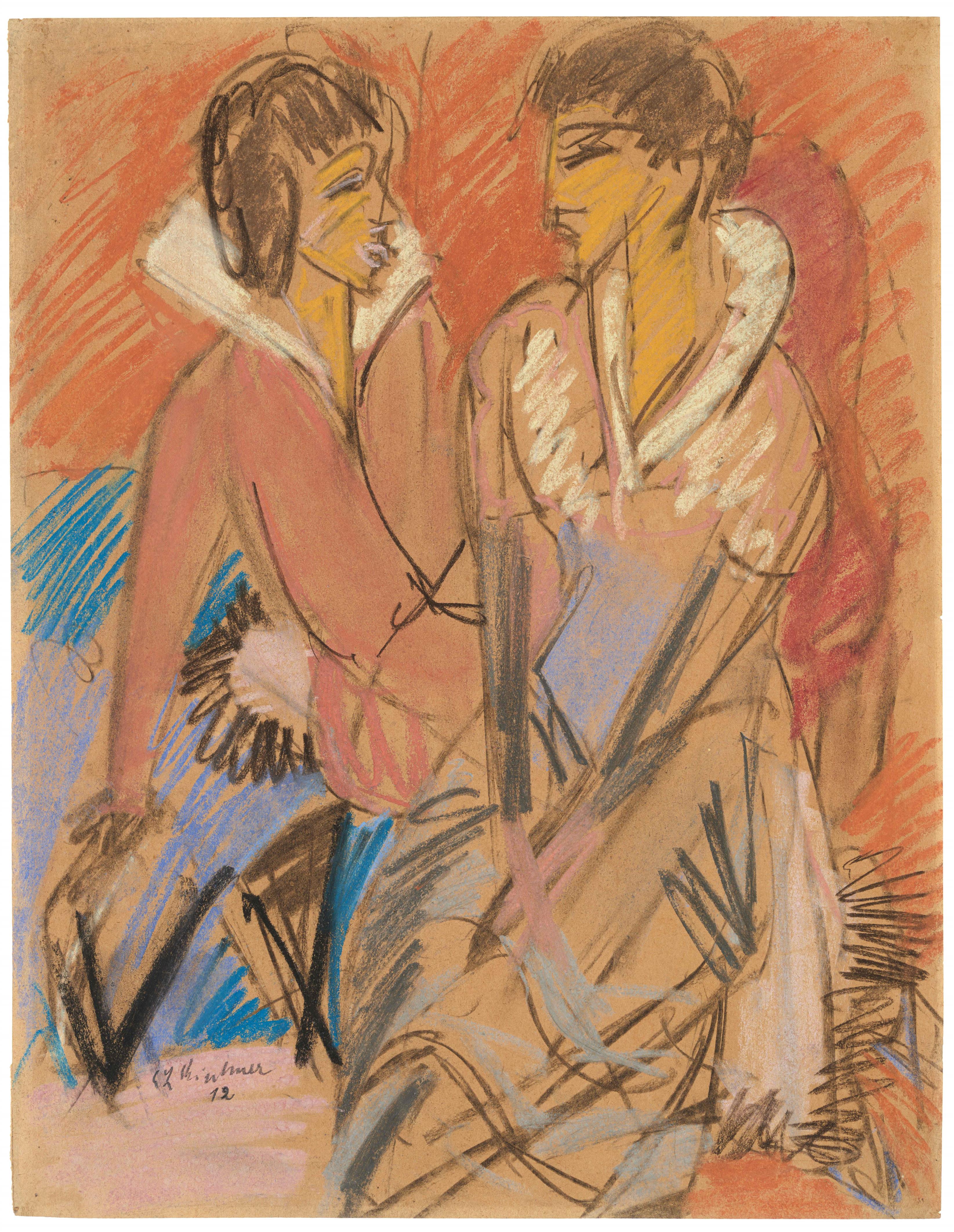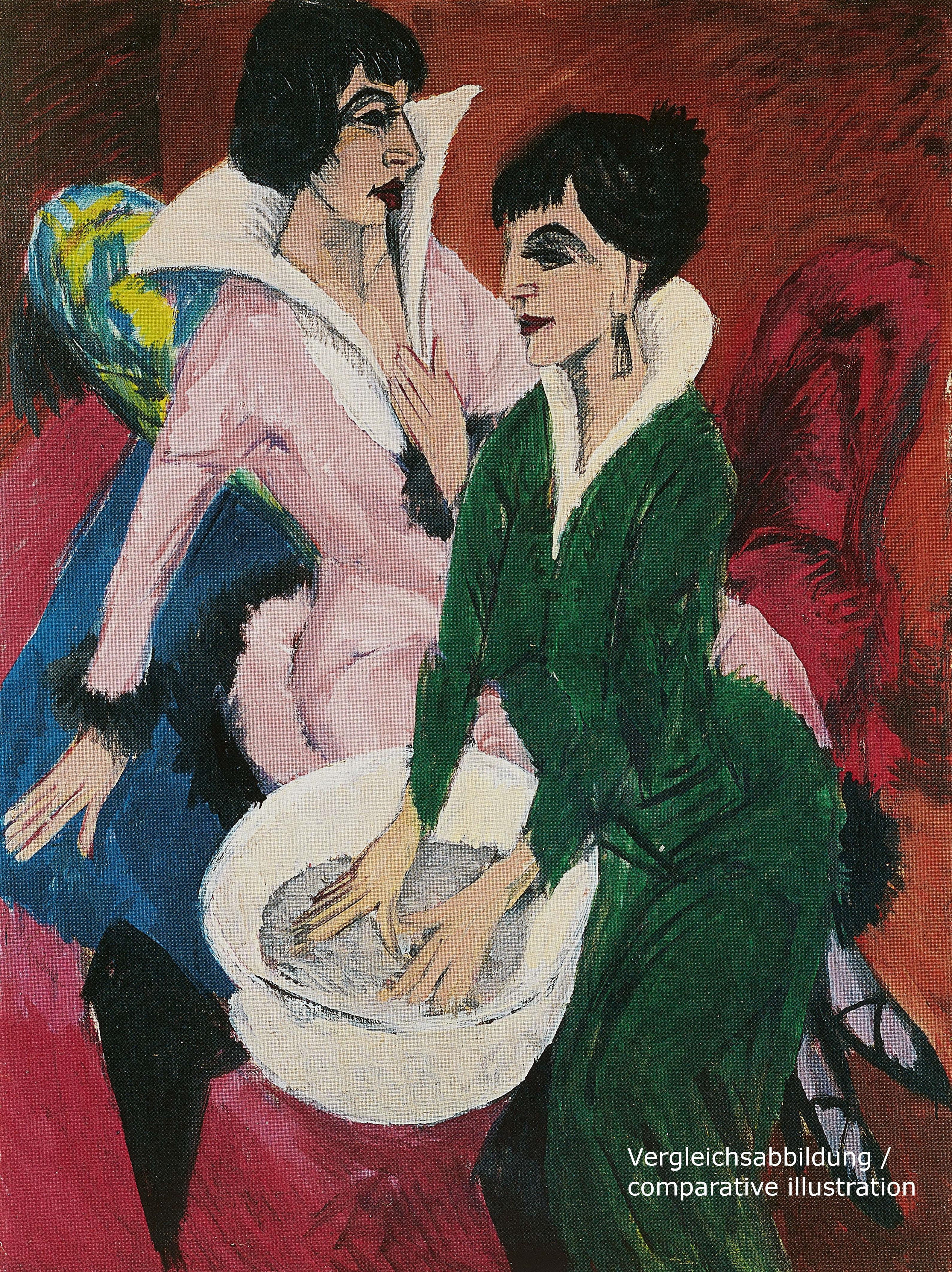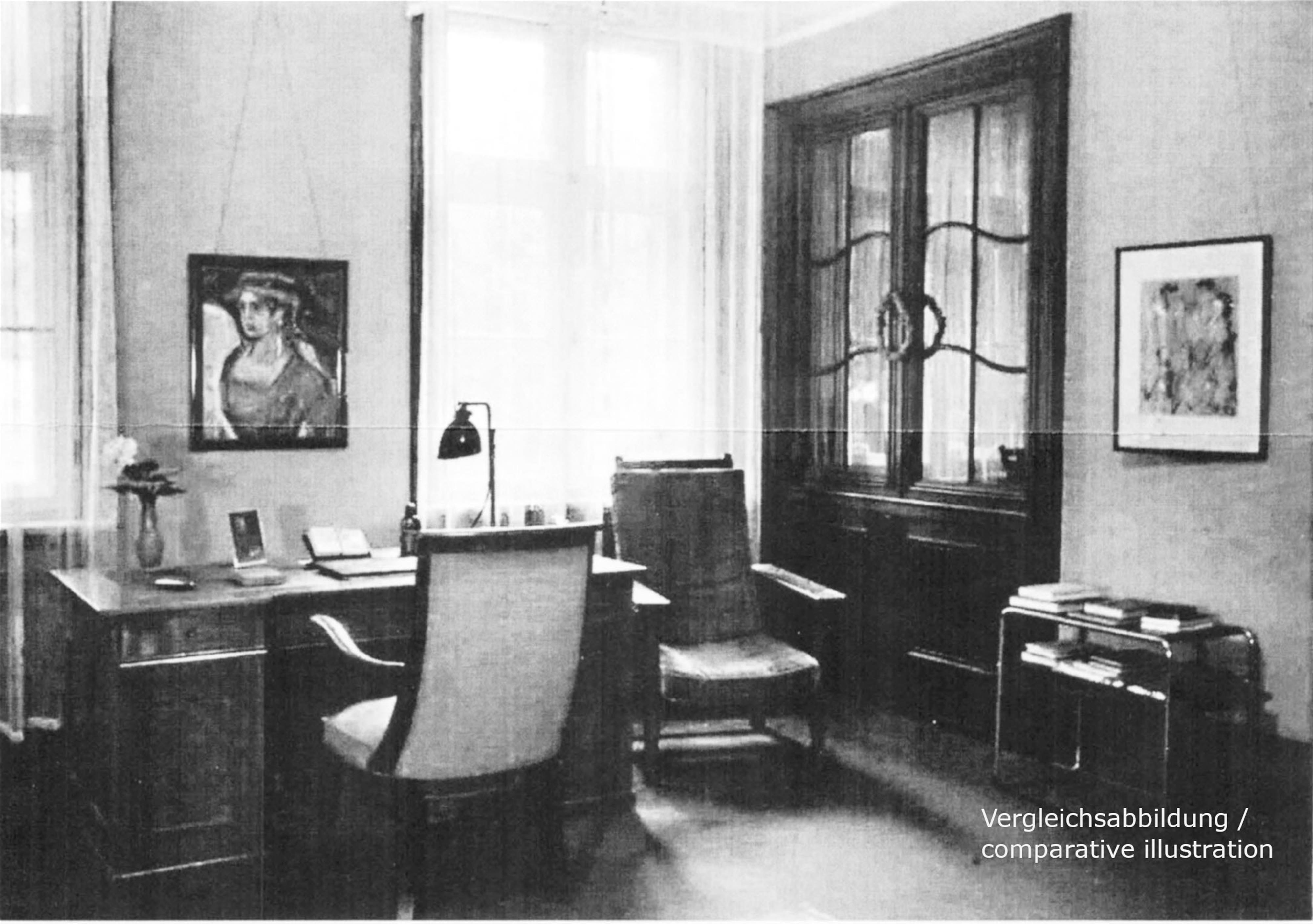Ernst Ludwig Kirchner
Zwei Frauen
1912
Pastel and charcoal on brownish paper. 43.5 x 33.5 cm. Framed under glass. Signed and dated 'E L Kirchner 12' in pencil lower left. Dated, titled and inscribed "Zwei Frauen 1912 Pastell" verso. - With a pencil sketch of a man's head on the reverse. - In very good condition.
With “Zwei Frauen” we are able to offer an important portrait image from one of the most interesting phases in Ernst Ludwig Kirchner’s oeuvre.
Utilising decisive hatching, Kirchner created this substantially detailed pastel drawing in 1912, a time when his situation in his life and work were characterised by upheaval. In 1911 he had moved from Dresden to the pulsating metropolis of Berlin, where he lived in a combination flat and studio in the same building as Max Pechstein. Life in the big city – defined by speed, anonymity and an extravagant nightlife – exercised a major influence on Kirchner’s artistic expression, and he captured his new impressions in a personal pictorial idiom rich in sensations.
The two women depicted are Gerda and Erna Schilling, two sisters whom the artist met shortly after moving in. They had a lasting influence on his private life – he was initially briefly involved with Gerda, but Erna would become his partner in a lasting relationship and remain at his side until his death in 1938. Above all, however, they became his most important models and brought about a decisive change in the feminine type depicted in his pictures. Moving away from the rounded lines of his Dresden period, Kirchner now arrived at slender, elongated forms representing the elegant, independent type of the modern urban woman. Looking back, Kirchner himself later wrote: “The beautiful, architectonically structured, austerely formed bodies of these two girls displaced the soft Saxon bodies. In thousands of drawings, prints and pictures, these bodies shaped my sense of beauty into the form of the physically beautiful woman of our time” (cited in: Magdalene Schlösser, Erna und Gerda Schilling, in: Ernst Ludwig Kirchner in Berlin, exh. cat. Brücke Museum Berlin 2008/09, p. 74). This new ideal of beauty ultimately culminated in the coquettes of his famous Berlin street scenes of 1913/14.
Here it manifests itself in the sharply angular lines of the women’s profiles, their elongated necks and slender waists, which are further accentuated through the flattering lines of their elegant attire. A striking freshness and immediacy are displayed by the drawing, which shows the sisters – Gerda on the left, Erna on the right – in the midst of an intimate conversation. Kirchner used this composition as a source image for his 1913 painting “Zwei Frauen mit Waschbecken” (Gordon 295, Städel Museum Frankfurt), although that work is more static in structure and places the women in front of one another in a way that creates distance.
This drawing is remarkable not just for its extraordinary quality but also for its provenance: it is from the important private collection of Max Sauerlandt (1880–1934), art historian and director of the Museum für Kunst und Gewerbe Hamburg (see comparative ill.).
Provenance
Collection Max Sauerlandt, Hamburg; Grisebach Berlin, Auktion 24, 29 May 1992, Lot 23; Lempertz Köln, Auktion 746, 7 June 1997, Lot 1280; Private collection, North Rhine-Westphalia
Literature
Gerd Presler, Ernst Ludwig Kirchner: Seine Frauen, seine Modelle, seine Bilder, Munich/New York 1998, p. 73 f. with colour illus.; Magdalena M. Moeller, Von Dresden nach Davos. Ernst Ludwig Kirchner. Zeichnungen, Munich 2004, p. 123, with illus. 36






